How Tall Should a Home Movie Theater Be? A Detailed Guide
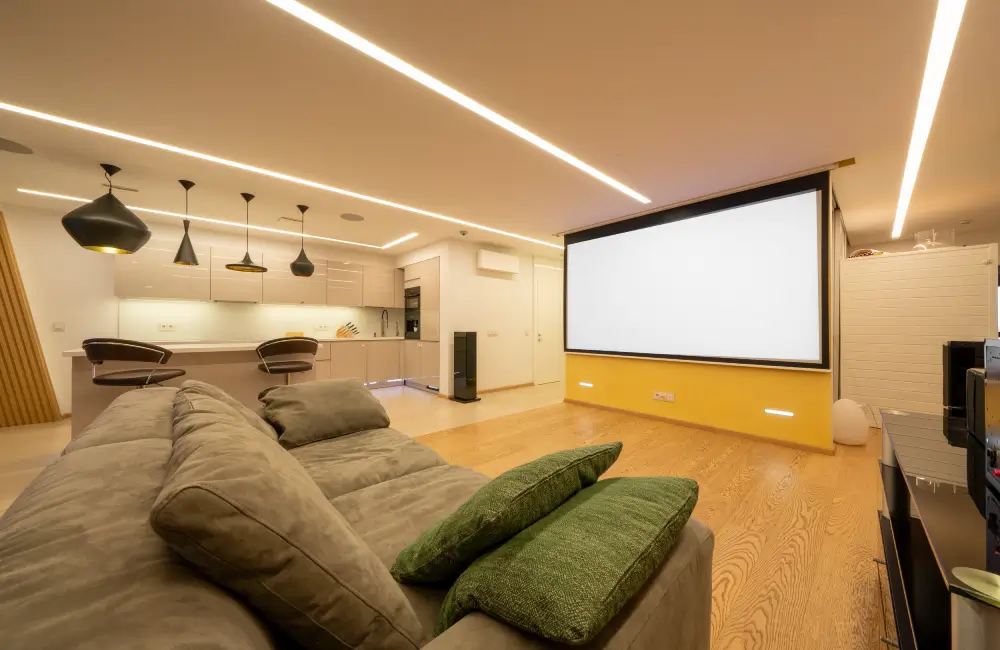
When creating a home movie theater, many factors determine the experience’s depth. The ceiling height is an important consideration that is sometimes ignored. The topic “How tall should a home movie theater be?” is crucial for comfort and improving audio and visual quality. In this post, we’ll look at the best ceiling height for a home theatre, offer recommendations for maximizing space, and provide professional advice personalized to Denver homes via Denver Sight and Sound Company.
Why Does Ceiling Height Matter in a Home Movie Theater?
Before we go into specifics, it’s crucial to understand why ceiling height is necessary for your home theater’s performance.
Acoustics
The height of your room determines how sound waves travel. Taller ceilings provide a more vertical area for sound to travel, resulting in better acoustics and reduced sound distortion. Poor acoustics might result in confused language or distorted audio effects, which detracts from the viewing experience.
Visual Experience
The height of your ceiling might affect screen size and viewing angle. A higher ceiling helps for larger projection displays and greater flexibility in seating arrangement. Optimal screen positioning allows viewers to enjoy a more comfortable viewing angle without straining their necks.
Comfort
A low ceiling can make the room feel enclosed, especially for taller people. An appropriately sized ceiling makes the space feel open and comfortable for everyone.
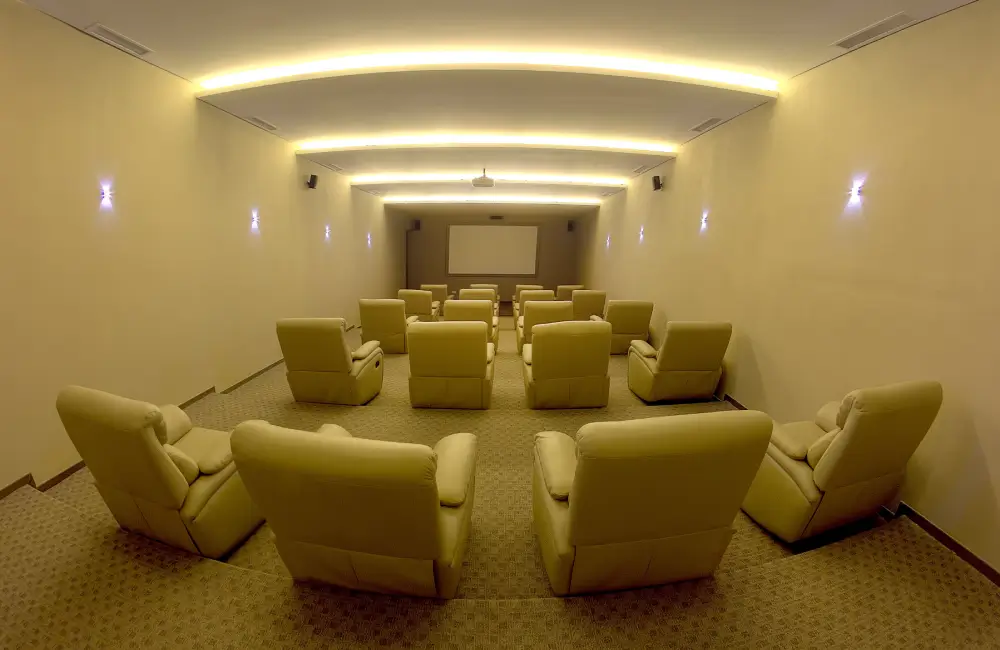
Ideal Ceiling Height for a Home Movie Theater
Now that you understand the significance of ceiling height let us analyze the ideal dimensions. The recommended height may differ based on the room size, screen, and seating arrangement. However, there are some general rules to follow:
Standard Home Theater Ceiling Heights
Minimum Ceiling Height
A home theater should have a minimum ceiling height of 8 feet. Anything shorter could make the space feel tight, and the audio may not work well. A shorter ceiling may also affect the viewing experience, since there may not be enough room for a large screen or projector.
Optimal Ceiling Height
A ceiling height of 9 to 12 feet is usually considered appropriate for home theaters. This range allows for larger screens and better sounds. A 9-foot ceiling provides a decent balance of sound and visuals, although a ceiling height closer to 12 feet allows for greater screen size and seating arrangement versatility.
High-End Theaters
Ceiling heights in larger, premium home theaters can be more than 12 feet high. This is often found in larger homes or separate home theater rooms. More ceilings (13 feet or more) create an unforgettable cinematic atmosphere, with enough area for sound dispersion and superior viewing experiences.
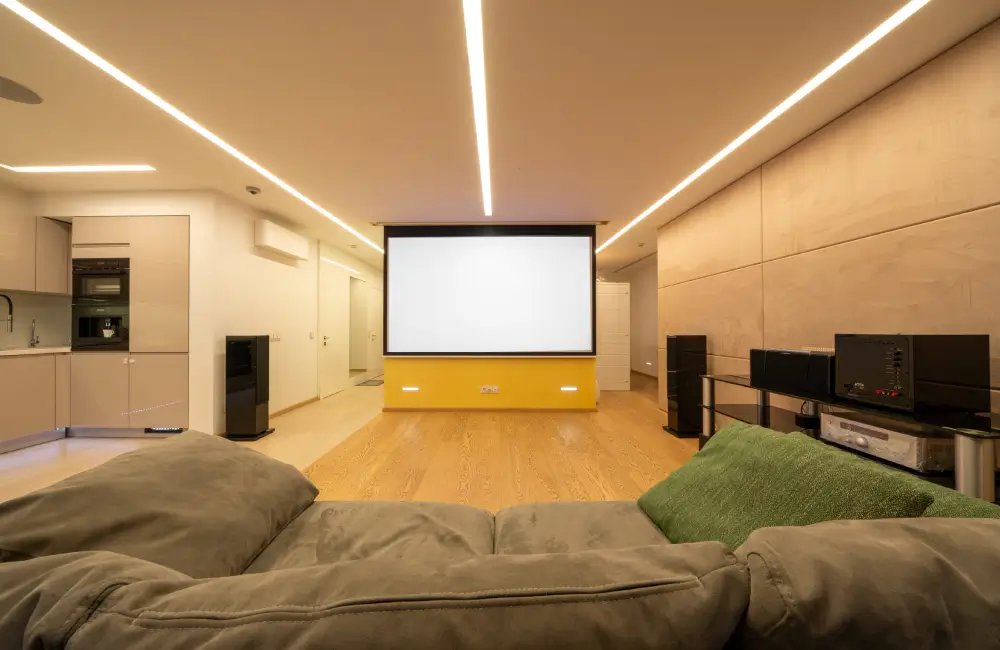
Factors to Consider When Determining Ceiling Height
When creating the optimal ceiling height for your home cinema, you should consider several factors:
Room Size and Dimensions
The overall size of the room determines how tall the ceiling can be. A larger room can support taller ceilings, whereas a smaller room may feel uncomfortable with too much vertical space.
Screen Size
As the screen size increases, the room should be taller to maintain pleasing views. For example, a 120-inch projection screen typically requires a room with a minimum ceiling height of 9 feet. Larger screens may require extra vertical space to prevent viewing angle issues.
Seating Layout
The number and arrangement of seats impact the room’s height. If you use stadium-style seating (seats raised at different heights), you’ll need higher ceilings to avoid blocking sight lines. When estimating the size of the room, remember to adjust for the distance between the seating area and the screen.
Acoustic Considerations
If you want a completely realistic experience, engage a professional acoustician to optimize ceiling height. Excessively low ceilings can result in “flat” sound, whilst excessively high ceilings may provide echoes that filthy the audio. Proper sound treatment materials and speaker positioning can help to lessen some of these impacts.
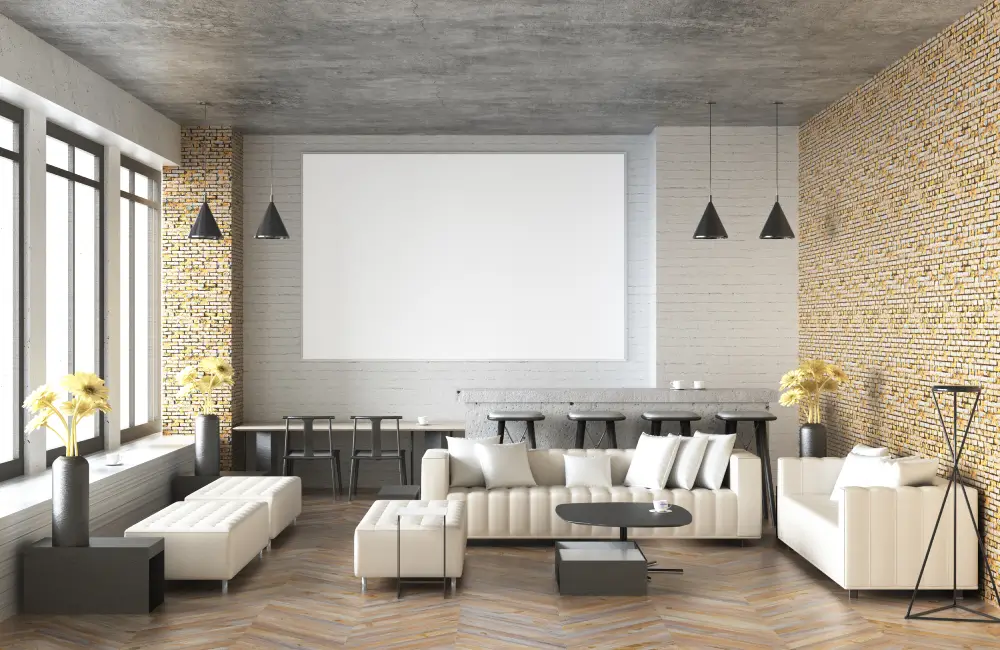
How to Achieve the Right Ceiling Height in Your Home Theater
If you’re working in a location with a fixed ceiling height, you might be wondering how to make the most of the situation. Here are some tips for optimizing the space.
Use Acoustic Panels
If your ceiling is lower, you can use acoustic panels to increase sound quality. These panels absorb sound and reduce echo, allowing your home cinema to sound better even in rooms with lower ceilings.
Mounting the Projector
Consider putting the projector on the ceiling for a more professional look and better viewing angles. A higher ceiling makes this easier because it prevents interference with sightlines or seats.
Adjust Seating Layout
If your ceiling height is limited, change the configuration of your seats for maximum comfort. Rearranging seats to retain good sightlines or installing risers in the back rows can help compensate for a lower ceiling.
Consider Raised Ceilings
If you’re building or rebuilding, a vaulted ceiling can make a room feel larger while increasing comfort and acoustics. Be aware of how the ceiling height influences the overall acoustics and change your speaker placement accordingly.
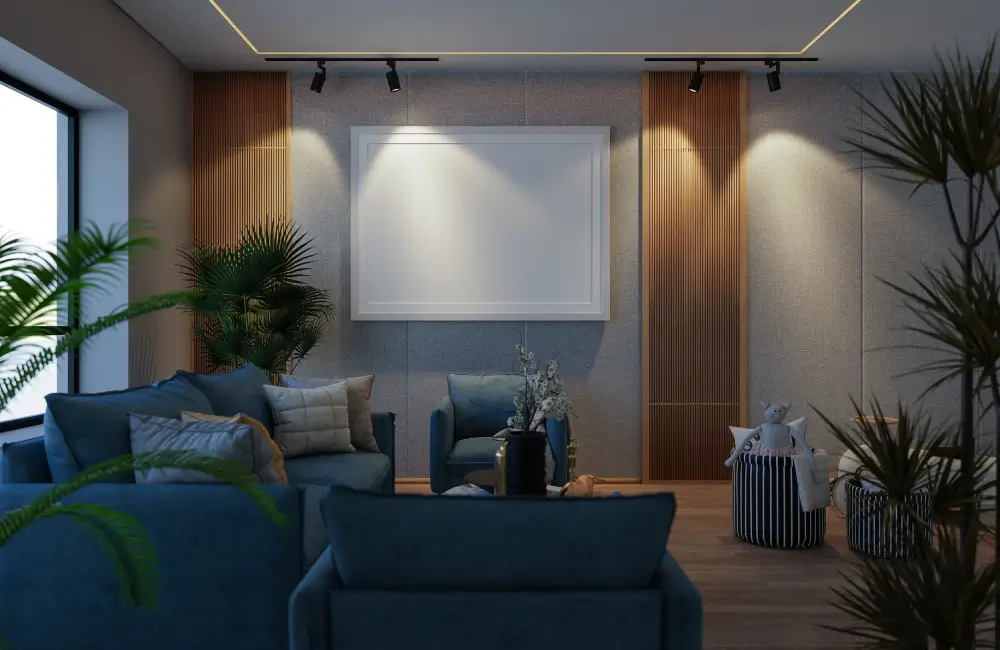
The Importance of Professional Installation in Denver
Working with a professional home theatre company, such as Denver Sight and Sound, may help guarantee that your home theatre is maximized for both function and style. Denver Sight and Sound offers personalized home theater installation services that consider your space’s specific acoustics, room sizes, and ceiling heights.
Our expert staff can build unique home theaters to match your specific requirements, whether you’re building a separate space or changing a living room. From acoustical engineering to projector setup, Denver Sight and Sound will help you achieve the ideal ceiling height and overall layout for a memorable home theater experience.
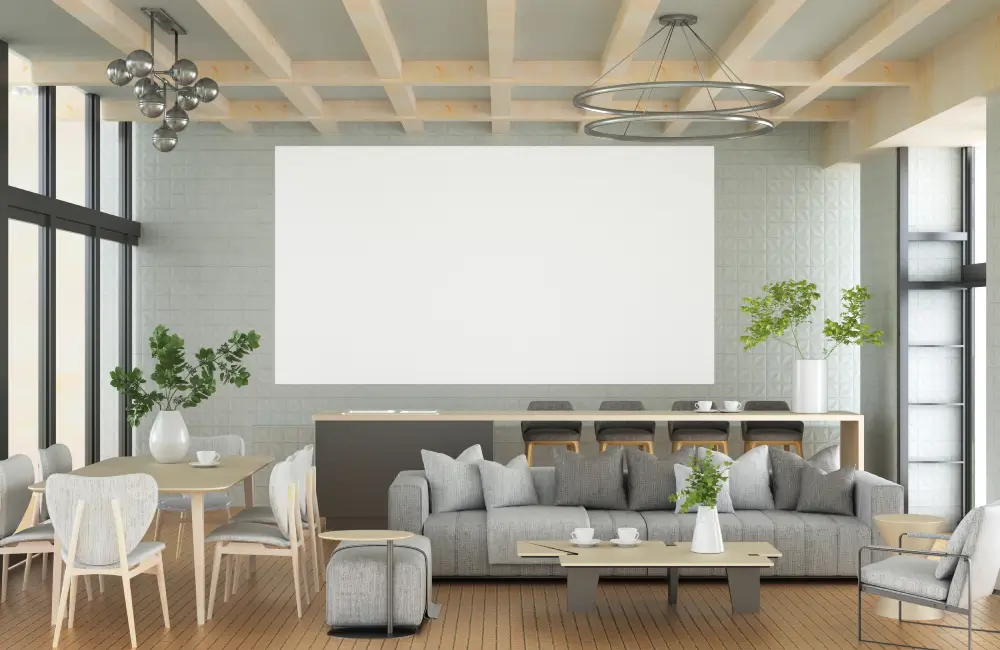
FAQs About Home Theater Ceiling Height
Can I still create a great home theater with a low ceiling?
You can still build a beautiful home theater with a lower ceiling, but it will require more careful design. Acoustic treatments, such as wall panels and soundproofing materials, can help to improve audio quality in a room with a low ceiling. Choosing a smaller screen size and optimizing seating arrangements will create a more comfortable atmosphere.
What is the best ceiling height for a projector?
For a projector to work correctly, the ceiling height must fit the projector’s throw distance and the screen size. Most home theater installations require a minimum ceiling height of 9 feet. Higher ceilings (10-12 feet) are preferred for larger projectors or screens.
Should I consider ceiling treatments for sound in my home theater?
Yes, soundproofing and acoustic treatments are necessary to achieve excellent audio quality. Acoustic panels on the ceiling and walls can considerably improve sound clarity and reduce echoes, particularly if your room has high or uneven ceilings.
How can I maximize my home theater’s ceiling height on a budget?
If you have a limited budget but want to maximise your space, add raised seats, ceiling mounted projectors, and acoustic materials to improve sound. Even if your ceiling height is limited, these ideas can help you create an unforgettable cinematic experience.
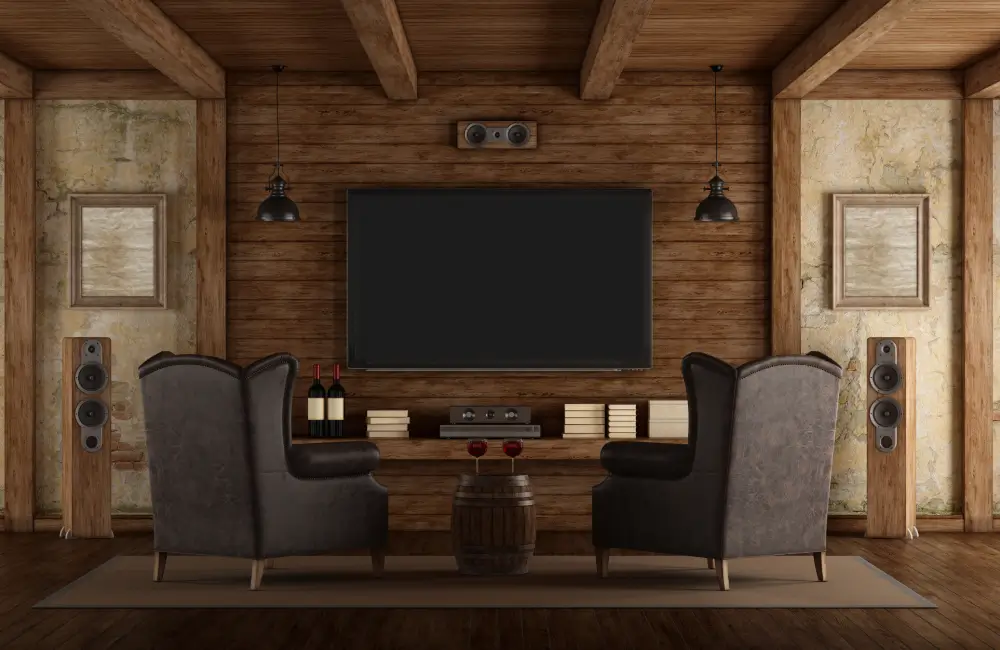
Final Words
Finally, the appropriate ceiling height for your home movie theater is determined by various criteria, including room size, screen size, seating arrangement, and acoustics. Whether you have a small room or a vast basement, knowing how tall your ceiling should be will help you construct a more comfortable and practical home theater. Partnering with Denver Sight and Sound Company guarantees that your theater space is suited to your specific needs, with expert guidance and competent installation for the best cinematic experience possible.

Recent Comments